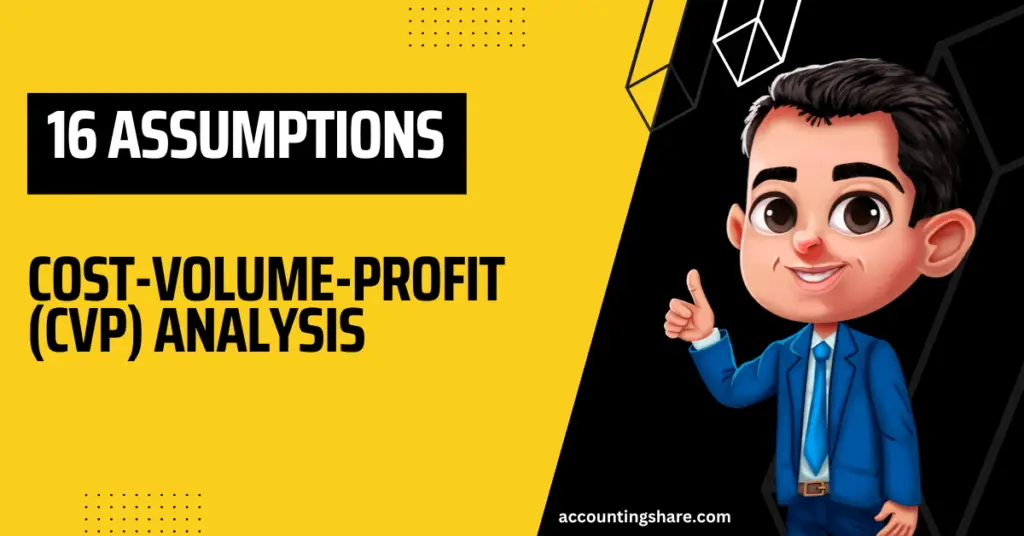Ehr Vs Emr Definition, Advantages & Ehr Usage Developments
September 7, 2023W kwietniu na portalach rekrutacyjnych o 1 proc mniej ofert pracy rdr Grant Thornton
September 25, 2023
In a cost-volume-profit analysis, business owners can easily see how changes in the cost of manufacturing goods and the sales of those goods will affect their profits. However, like all accounting models, cost-volume-profit analysis requires many assumptions that don’t always occur in real life, making it a specific tool for a specific job. In other words, it’s a graph showing the relationship between the cost of units produced and the volume produced using fixed costs, total costs, and total sales. If you want to use the above formula to figure out your company’s target sales volume, you’d need to simply add a target profit amount per unit to the fixed-cost component used within the formula. The following three independent examples show the effects of increases in sale volume, selling price per unit, and variable cost per unit, respectively. Using CVP analysis, managers can analyze the profitability of different product lines.
What Is the Primary Objective of CVP Analysis for Revenue and Cost Planning?
Tracking changes to fixed costs, variable costs, pricing, and sales volume illuminates profitability drivers and guides data-driven decisions. Lastly, cost volume profit analysis can facilitate the formulation of a cash flow budget. Knowledge of profit levels at various volumes can help predict the cash flow, chiefly inflow from sales revenue and outflow from expenses. By modeling different scenarios of volume, costs, and profit, businesses can anticipate potential cash flow and make informed strategic decisions to ensure financial stability. Through this, they can uncover deeper insights into their product profitability and gain a better understanding of how changes can impact profitability. The first principle to consider when looking at cost volume profit analysis is the behavior of costs.
Discover more from Accounting Professor.org
Variable costs may not stay constant per unit, and fixed costs might not remain unchanged throughout all levels of operations. Changes in production scale, supplier prices, or efficiency can all alter cost behavior, making this assumption unrealistic. The contribution margin is key in CVP, acting as a critical figure to reach gross margin targets.
Cost-Volume-Profit (CVP) Analysis and Contribution Margin
With CVP Analysis information, the management can better understand the overall performance and determine what units it should sell to break even or to reach a certain level of profit. When armed with this information, businesses can have a better understanding of their performance. This is by looking at how many units they have to sell to either break-even, or reach a specific profit threshold. This information will likely be the basis for a reasonable forecast of future sales volume and determine the impact of cost changes on net profit. This limitation can significantly impact the accuracy of the analysis, as these changes can affect the sales volume, price, and cost structure. Moreover, managers can also use CVP analysis to determine the minimum price point that must be set to cover the costs of producing a product or providing a service.
- This is especially helpful when figuring out how to deal with changes like higher costs for materials or deciding on the best prices for their products.
- This is often a calculation used to find the break-even point, which is why it’s sometimes referred to as a break-even analysis.
- It serves as a foundation for strategic planning, helping businesses to make informed decisions about pricing, cost management, and investment in growth initiatives.
- Let’s see how CVP Analysis works in simple steps, including exercises to compute net income assuming changes in key variables.
Understanding the Product Mix

It can also help businesses to make informed decisions about pricing, product mix, and resource allocation. The foundational CVP formula provides a structured approach to assess how adjustments in these fundamental factors can influence an organization’s financial performance. It’s used to calculate the break-even point in sales units or sales dollars, and to understand the relationship between costs (both variable and fixed costs), sales volume, and profit.
Ask Any Financial Question
Cost Volume Profit analysis helps in determining the level at which all relevant cost is recovered, and there is no profit or loss, which is also called the breakeven point. It is that point at which volume of sales equals total cvp meaning in business expenses (both fixed and variable). Thus CVP analysis helps decision-makers understand the effect of a change in sales volume, price, and variable cost on the profit of an entity while taking fixed cost as unchangeable.
We will review the basic concepts, formulas, and assumptions underpinning this technique. By the end of this article, you should have a firm grasp of CVP analysis and its importance in business decision-making. Ultimately, CVP analysis provides a clear picture of a business’s financial situation and allows for strategic planning to achieve long-term success. The breakeven point is visually depicted using a profit-volume (P/V) chart, with volume on the X-axis and profit/loss on the Y-axis.
It is an important concept in Cost-Volume-Profit (CVP) analysis and can help businesses make informed decisions about pricing, product mix, and resource allocation. CVP analysis can also be used to calculate the contribution margin of a firm’s products; for a business to be profitable, its contribution margin must exceed its total fixed costs of production. The contribution margin can be calculated by subtracting the total variable costs of production from total sales.
